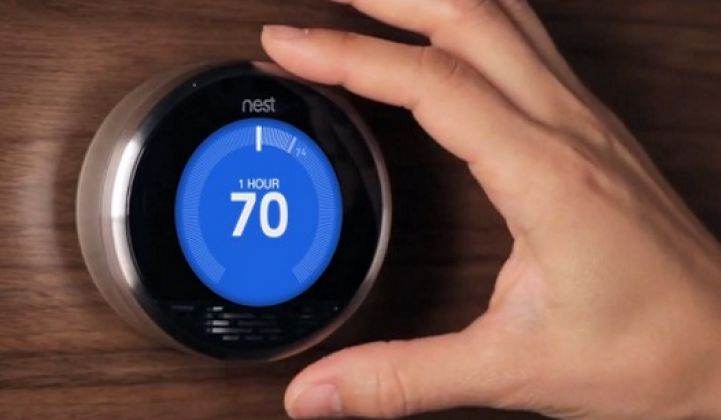Earlier this week, Jessica Lessin broke the news about Nest Labs’ latest “Trojan horse” into the home.
It’s not smart locks or a set of LEDs. It’s a smoke detector.
Nest, which makes the most talked-about thermostat in the history of residential HVAC, is ready to move beyond energy. Just days after the smoke detector story broke, Nest announced it would launch an application programming interface (API) to allow third-party companies to develop apps on top of the thermostat. The first partner in the program is Control4, which is known for its high-end connected home offerings and recently had an IPO.
Nest is not alone in craving home automation domination; however, it is alone in thinking that the smoke alarm is step two in getting there. It is either brilliant or misguided, but based on the reception of its sleek thermostat, a betting man would likely go with the former.
But it’s not a definite win. A smoke detector is even more invisible than a thermostat in most homes. Lessin noted that it could have features such as being able to wave your hand over it to turn it off, or it could monitor for carbon monoxide. It better do more than that.
There are other smoke detectors that monitor the air for carbon monoxide, and they cost about $30. The Nest thermostat retails for $249. No word yet on the cost of the smoke detector.
While the Nest thermostat has the potential to help users save on their energy bills, a smoke detector does not. Though heating and cooling is a daily part of our lives in many regions of the U.S., interacting with a smoke detector is not.
Like Apple, however, once you have one device, it is often easier to stick with that brand than to move away and try to get all of your devices to work across different platforms. Let’s not forget about the cool factor, as well. Alarm and service providers are also building out connected home offerings, but Nest uses a proprietary system, so its thermostat will not run on any of the platforms that run those other services. It is happy to play alongside others, as it does in some utility demand-response offerings, but it doesn’t play directly with others.
The Apple connection is important, because what is emerging is essentially an Apple vs. Android play in the burgeoning connected home marketplace, where energy efficiency and control are only a small part of the offering. There are companies that want to have a broad, open platform where everyone can jump in and play, and consumers can pick the devices that they want to network together. Nest, meanwhile, will have a developer network that will have certain devices and applications, but it looks like it will all connect through the Nest thermostat.
The appeal for consumers will come down to price, function and design. What kind of redesigned residential device will we pay far more money for than we ever thought possible because we like its looks or convenience? A smarter, sleeker smoke detector? An intelligent sprinkler system? A heating system that knows when we’re close to home? A vacuum that can feed the dog?
With Nest now firmly in the home automation market, and plenty of other deep-pocketed players vying for control, we’re bound to find out in coming years.



